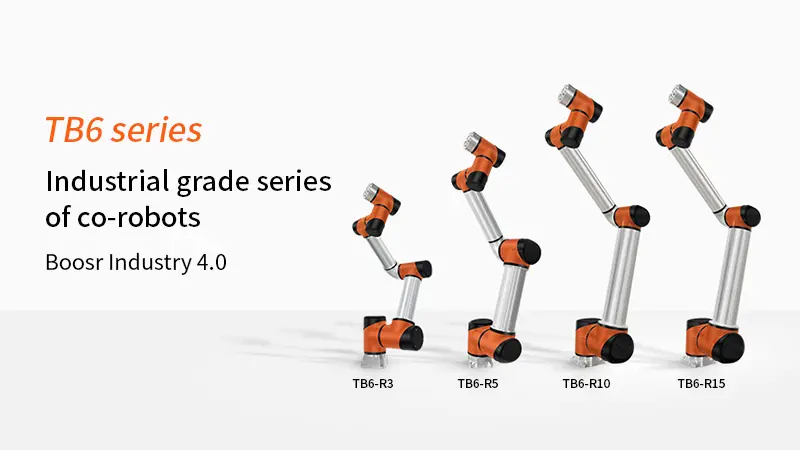Advantages of domestic collaborative robots
Date:2021-01-22Co-robots are an important branch of industrial robots. The co-robot mainly adopts a lightweight design and relatively simple structure. A load of a co-robot is generally lower than that of a traditional industrial robot, and its working range is similar to that of a human arm. The main technical features of co-robots include single-arm co-robots, double-arm co-robots, composite robots, mobile double-arm co-robots, table tennis robots, etc.; among them, the double-arm co-robot has a load of 3kg, 5kg, and single-arm co-robots. The load is 3kg, 5kg, 10kg, 15kg and 20kg. At present, the product application of co-robots can meet the requirements of precision assembly, testing, and human-machine collaboration, and is widely used in the fields of automobiles, 3C electronics, scientific research, and education. In the production of electronic products, complex processes such as welding, assembly, grinding, testing, and sorting are involved.
1. It is to cooperate with people and give full play to the advantages of people and robots. Compared with industrial robots that have been developed for decades, the biggest breakthrough of co-robots is that they can achieve human-machine integration instead of isolation by safety fences. This method not only shortens the distance between humans and robots but also Greatly reduces the area occupied by the workstation. More importantly, it can fully combine the advantages of humans and machines, learn from each other, and allow robots to assist humans in completing those highly repetitive and high-precision tasks while solving the problems of high flexibility and continuous optimization of humans. When assembling high-precision heavy parts, human-machine collaboration highlights the advantages of combining human and machine advantages.

2. High safety is one of the basic characteristics of co-robots. It was originally designed to provide security for human-computer interaction. Therefore, in order to achieve the safety of human-machine cooperation, co-robots generally adopt lightweight designs, such as lightweight body, application endoskeleton design, etc.; limit operating speed and motor power; and use contact-type detection joint torque sensors and safety controller technologies, And other ways to protect personal safety are fundamental ways to avoid injury.
3. The deployment is simple, flexible, and easy to use. Co-robots generally support drag and drop teaching, with an intuitive user programming interface, simple integrated operation, easy to master software systems and modular encoders, etc. After unpacking in most places, ordinary workers pass A certain amount of training can complete a lot of deployment work, so deployment is very simple. In addition, this lightweight co-robot can be installed on a desktop or on a device, which is very flexible.
4. Low cost. The cost of industrial robots usually includes the price and deployment of the robot itself. Due to the ease of programming and installation, deployment costs are usually low. In addition, the space requirements of lightweight co-robots are also greatly reduced, which can reduce a lot of installation and factory costs for enterprises.
5. Supporting flexible production modes, co-robots break through the restrictions of safety barriers and are not restricted by fixed geographic locations. Combined with actual needs, through simple programming and training, you can quickly adapt to new production tasks in different places and better support flexible production modes. Even if the robot fails, it can be quickly replaced with a new robot.
Previous Article: Co-robots promote the acceleration of manufacturing intelligence
Next Article: To what extent will robots replace humans?